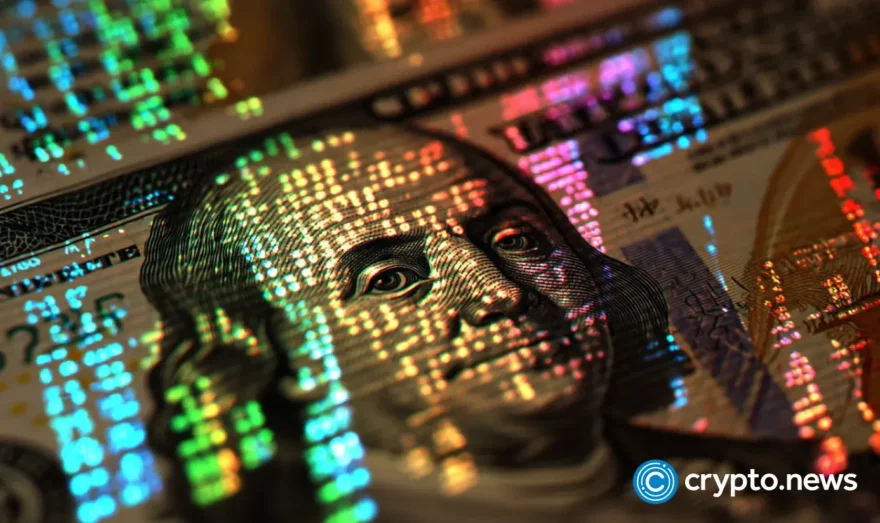What is DeFi? Understanding Decentralized Finance and its uses

What is DeFi, and why is it so popular in crypto? Learn everything you need to know about Decentralized Finance and its most common uses.
Table of Contents
DeFi explained: what is Decentralized Finance
What does DeFi mean? DeFi, or Decentralized Finance, is a fast-growing industry closely related to cryptocurrency. At its core, DeFi aims to change the financial industry by removing intermediaries like banks and empowering users to conduct independent financial transactions.
DeFi probably began with Bitcoin in 2009, introducing peer-to-peer digital money and laying the foundation for blockchain-based financial applications. However, the pivotal moment arrived in December 2017 with the launch of MakerDAO. MakerDAO’s protocol allowed users to issue a stablecoin, Dai, pegged 1-to-1 to the US dollar, using digital assets as collateral, thereby enabling decentralized borrowing and lending. This innovation marked the beginning of a new, open financial system, inspiring the launch of subsequent protocols like Compound Finance and Uniswap. Within three years, the DeFi ecosystem expanded rapidly, offering a range of services from lending and trading to creating synthetic assets, with total assets locked surpassing billions of dollars, signaling the nascent stage of a transformative financial landscape.
How does DeFi work?
DeFi (Decentralized Finance) is a catch-all term for financial services run on publicly available blockchains like Ethereum. DeFi allows you to perform transactions like lending money and trading assets without the help of third parties like banks. Like cryptocurrencies, DeFi has a global reach, supports peer-to-peer transactions, and is lightning-fast.
DeFi products are non-custodial, meaning users are responsible for their DeFi tokens and private keys. Because users are responsible for their keys, it prevents massive loss of funds if a cyberattack breaches a bank or crypto exchange.
Key components of DeFi
DeFi relies heavily on blockchain technology, which serves as a decentralized and immutable digital ledger recording transactions and smart contract data across a network. Blockchains like Ethereum and Solana, renowned for supporting smart contracts, are pivotal in facilitating DeFi services. Smart contracts, the backbone of DeFi, enable automated and transparent execution of agreements without intermediaries, operating on blockchain platforms such as Solana or Polkadot. Decentralized applications (dApps) serve as the vehicle for implementing DeFi projects, interacting with blockchains to offer various financial services globally without the need for personal information or trust in centralized entities.This ecosystem fosters accessibility and trustless financial interactions, revolutionizing traditional finance.
DeFi vs crypto: the key difference
The key disparity between DeFi and cryptocurrency lies in their fundamental concepts. DeFi represents a decentralized financial services ecosystem, whereas Bitcoin functions solely as a cryptocurrency. Essentially, DeFi serves as the framework enabling transactions involving cryptocurrencies like BTC to occur between individuals or entities.
Differences between Centralized and Decentralized Finance
DeFi is the opposite of CeFi (Centralized Finance). CeFi consists of traditional financial institutions like banks and credit unions. Additionally, CeFi also includes cryptocurrency exchanges like Binance and Coinbase.
Some prominent differences between DeFi and CeFi are:
Privacy
Most CeFi institutions require you to fill out forms with personal data like your full name, home address, and phone number. While DeFi isn’t entirely anonymous, you don’t need to provide much personal information to make transactions.
Verifiability
Banks and other traditional financial institutions keep all their transactions secret. Since DeFi works on the blockchain, any user can view any transaction, giving it an extra layer of transparency and trust.
Operating hours
Banks, stock exchanges, and credit unions typically follow business hours and close on weekends. However, DeFi doesn’t share the same limitations – you can make transactions 24 hours a day, seven days a week.
Common uses for DeFi
Like its CeFi counterpart, DeFi has many uses in the financial sector. Here are some common ways people use DeFi:
Decentralized exchanges (DEXs)
Decentralized exchanges like DeFi Swap and Uniswap allow users to trade crypto without intermediaries. Instead of a central authority, smart contracts connect sellers with buyers – the coins are transferred directly from their wallets without any third party’s help.
Stablecoins
Cryptocurrencies experience more price fluctuations than fiat, which isn’t ideal for transactions. That’s why people made stablecoins or cryptocurrencies that are pegged to real-world assets. Most stablecoins are pegged to the U.S. dollar, but some are pegged to assets like gold or silver.
Some of the most popular stablecoins include:
- Tether (pegged to the U.S. dollar)
- USD Coin (pegged to the U.S. dollar)
- Binance USD (pegged to the U.S. dollar)
- Digix Gold Token (pegged to gold prices)
Lending platforms
Lending sites like Compound let users borrow or lend cryptocurrencies. An algorithm sets the interest rates, so interest rates on high-demand cryptocurrencies are typically higher. Unlike CeFi lending, which requires identification or credit scores, DeFi lending only requires collateral in the form of tokens.
Prediction markets
Prediction markets are essentially betting sites where people make money by correctly guessing the outcome of an event, like presidential elections. DeFi prediction markets are growing in popularity because most governments attempt to shut down centralized prediction markets.
Understanding DeFi wallets
Like cryptocurrency, you need a DeFi wallet to use decentralized financial services. All DeFi wallets are non-custodial, so you’re responsible for keeping your seed phrase or private key safe.
While there are both hardware and software DeFi wallets, software wallets are by far the most popular choice for DeFi transactions. Some popular wallets include:
- MetaMask
- WalletConnect
- Rainbow Wallet
Not all wallets are compatible with every blockchain – for example, MetaMask doesn’t support the Solana blockchain. Depending on your requirements and preferences, you may need several DeFi wallets.
Different wallets also have varying support features. For example, SolFlare lets you manage your staked crypto, while MetaMask lets you trade tokens directly from its app.
Before you can use DeFi services, you must connect your wallet to its protocol by clicking “Connect Wallet”. Make sure your wallet is funded with crypto to perform the transaction.
Making money with DeFi
DeFi is a great way to earn passive income. Here are three ways to earn money on DeFi platforms:
Staking
Staking tokens on DeFi services is similar to having a bank savings account. You lock a certain amount of coins for some time and earn coins as a reward at the end of your stake period.
These rewards come from the blockchain, which uses your staked coins to validate transactions. Staking more coins allows you to earn higher rewards at the end of your stake period.
Some cryptocurrencies, like ETH, have a minimum staking amount. However, crypto exchanges also open staking pools, allowing you to join with smaller deposits.
Providing liquidity
Becoming a liquidity provider on decentralized exchanges like Uniswap works similarly to staking. You lock tokens in a liquidity pool and get liquidity pool coins as a reward for supporting token swaps. The more tokens you commit, the larger rewards you’ll get.
Lending
The most straightforward way to earn passive income with DeFi is by lending money. DeFi lending works differently because you lock the funds into a smart contract that chooses a borrower for you. Once they repay the loan with interest, you can unlock those funds and take your profits.
Benefits of DeFi
As with any new technological breakthrough, DeFi has its pros and cons.
Here are the benefits of DeFi:
- DeFi is inclusive, so anybody with a DeFi wallet and an Internet connection can access its services.
- Transactions in DeFi happen in real time, so exchange rates are always current.
- Users are responsible for their assets, reducing the risk of mass data breaches.
- DeFi data is tamper-proof, thanks to the blockchain.
- All DeFi transactions are viewable on the blockchain, ensuring transparency.
- Smart contracts that build DeFi protocols are highly customizable and can perform complex tasks.
DeFi risks and challenges
That said, DeFi is still in its infancy, and there are many risks associated with it, such as:
- The underlying technology of DeFi is still immature and may not hold up under extreme long-term stress.
- DeFi has nonexistent rules and regulations, so customers have little protection if things go wrong.
- Like traditional financial institutions, DeFi is also vulnerable to cyberattacks.
- Most DeFi loans require high collaterals, sometimes up to 100% of the loan’s value.
Future of DeFi
The future of DeFi holds great promise, with expectations of ongoing growth. Despite risks and challenges, the undeniable benefits of DeFi underscore its potential. Looking ahead, we can assume that DeFi will have a big role in changing how finance works.
FAQs
What is the goal of DeFi?
The main goal of DeFi is to remove banks and other third parties from financial transactions. This empowers users to perform independent and private transactions without the interference of any financial institutions.
What currencies are used in DeFi?
DeFi commonly uses cryptocurrencies called DeFi tokens. Some of the top DeFi tokens include Dai, Uniswap, and Aave.
Is DeFi a risky investment?
DeFi is still a risky investment because most of its products have not been stress-tested in the long term. That said, sticking to reputable DeFi tokens is a good way to mitigate risk.
When will DeFi be mainstream?
Nobody knows yet when DeFi will be mainstream. To go mainstream, DeFi must be consistently reliable, adopted by the masses, and regulated by governments.
Is Bitcoin DeFi?
Bitcoin can be considered DeFi since it has no central authority and is powered by a blockchain.
















